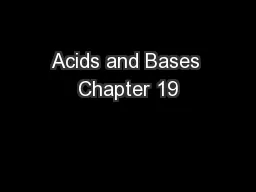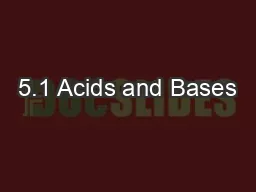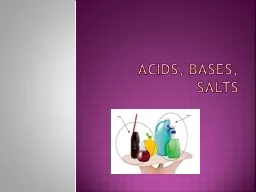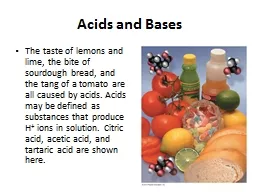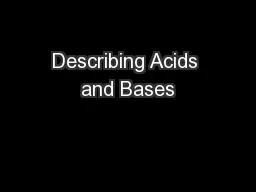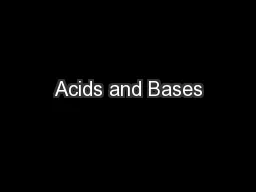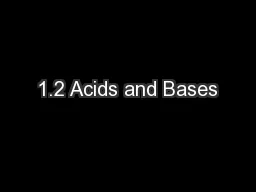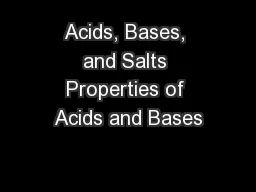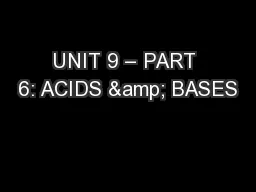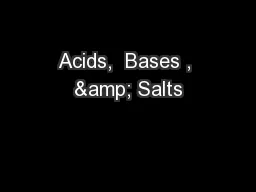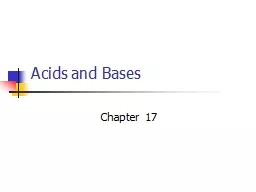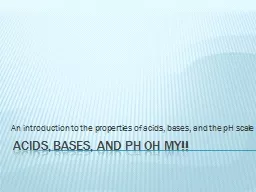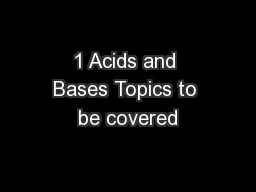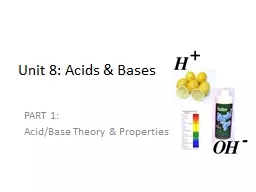PPT-Acids and Bases Chapter 19
Author : celsa-spraggs | Published Date : 2018-12-24
Naming Basic Acids When identifying and naming acids you are looking for two characteristics The compoundmolecule will begin with hydrogen H The number of following
Presentation Embed Code
Download Presentation
Download Presentation The PPT/PDF document "Acids and Bases Chapter 19" is the property of its rightful owner. Permission is granted to download and print the materials on this website for personal, non-commercial use only, and to display it on your personal computer provided you do not modify the materials and that you retain all copyright notices contained in the materials. By downloading content from our website, you accept the terms of this agreement.
Acids and Bases Chapter 19: Transcript
Download Rules Of Document
"Acids and Bases Chapter 19"The content belongs to its owner. You may download and print it for personal use, without modification, and keep all copyright notices. By downloading, you agree to these terms.
Related Documents

